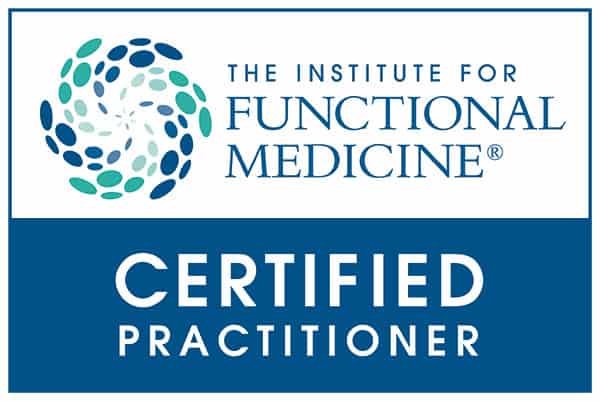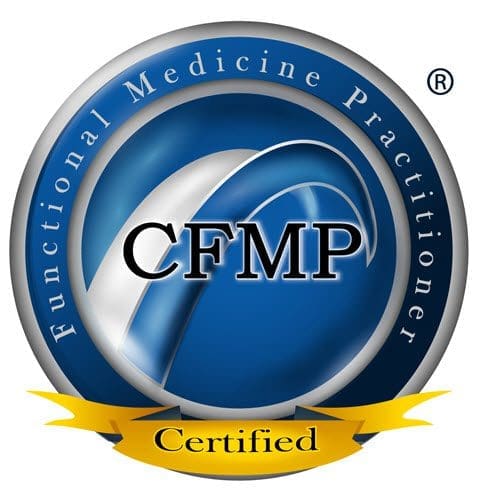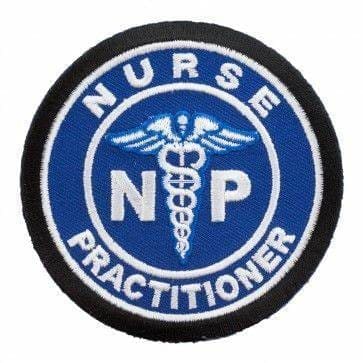
by Dr Alex Jimenez DC, APRN, FNP-BC, CFMP, IFMCP | UTEP (Local) RSS
Los Angeles – The UTEP track and field team had a strong performance with seven different athletes recording a new personal best on Saturday at the Jim Bush Collegiate Invitational.
Lucia Mokrasova clocked a personal-best 14.09 in the 100m hurdles to earn a fourth-place showing. Lilian Koech in her second race of the outdoor season competed in the 800m run claiming a second place showing with a personal best of 2:05.86 and the fifth-fastest time in school history. Linda Koech notch a personal-best of 4:26.47 in the 1,500m run.
Sophomore Tobi Amusan clocked the 10th fastest time in program history and recorded a season-best 23.48 in the 200m dash. Israel Ramsay leaped to a second-place showing in the high jump with a season-best 1.70m (5-06.75). Samantha Hall tossed 54.62m (179-02.25) in the discus to earn second overall.
On the men’s side, Alejandro Alcazar notched a personal-best 50.22 in the 400m for 12th place overall. Yinka Oyebanjo-Odofin garnered fourth place in the 400m hurdles for a personal-best of 56.06. In the 1,500m Michael Saruni clocked a personal-best 3:47.73 to earn gold, while Evans Kiprono ran his personal-best 3:59.45 for 10th place overall.
In his first race of the outdoor season, freshman Michael Saruni won the 800m with a time of 1:57.19 and teammate Jonah Koech followed for a second-place finish stopping the clock at 1:49.99.
Sohpmore Karol Koncos garnered a fourth-place showing in the hammer throw with a toss of 61.24m (200-11). Donivan Ortega also earned fourth place in the triple jump with a leap of 14.00m (45-11) for a season-best. Senior James Bias clocked 10.70 for a third-place finish in the 100m dash.
The Miners will return to action April 22 for their second home meet of the season. For more updates be sure to follow @UTEPTrack on Twitter.
by Dr Alex Jimenez DC, APRN, FNP-BC, CFMP, IFMCP | Crossfit, PUSH-as-Rx
Dr. Jimenez presents a glimpse of Crossfit as is spans across America.
ABOUT two decades ago in California, CrossFit was registered as a trademark by the founder Greg Glassman.
According to nerdfitness.com, CrossFit is a training philosophy that coaches people of all shapes and sizes to improve their physical wellbeing and cardiovascular fitness in a hard-core yet accepting and encouraging environment.
CrossFit workouts change to contain variety to keep its members on its toes. The routine consists of functional movements that aim to increase individual work capacity and is applicable to other sports activities.
More than 324,307 people participated from 175 countries last year. The open game has five workouts over five weeks, which is posted online for the participants to follow.
Every week for the five weeks of the open game, the workout of the day (WOD) is released on Youtube and the official CrossFit website.
CrossFit in Fiji
The Suva Boxing and Fitness gym introduced CrossFit in Fiji last year and entered the open games with only five members.
Napoleon Taumoepeau is the only qualified CrossFit coach in Fiji. He was named the fittest person in Fiji by CrossFit Forging Elite Fitness. CrossFit 679 is Fiji’s only CrossFit affiliate. This year there were 20 members in the CrossFit open game. March 26 was the last of the five workouts at the Suva Boxing and Fitness gym.
CrossFit 679
Determination was on the faces of the participants as they pushed to finish the final WOD of the open games at the Suva Boxing and Fitness gym.
The WOD includes a wide range of physical exercises such as thrusters, squats, pull-ups, sumo deadlift, high pulls and more. CrossFit 679 is a place that has no boundaries and it brings the best out of an individual.
The coach encourages the participants to work hard and never puts one down.
“It may seem intimidating but I have trained many people who have never done CrossFit. Nine out of 10 of them are intimidated but the truth is that CrossFit was designed for all levels of fitness. We, as coaches, are trained to teach someone with little or no knowledge about CrossFit and help them on their way through a new fitness journey,” said Taumoepeau, coach for CrossFit 679.
After every three months, the CrossFit 679 affiliate takes in members who are interested on a journey of learning about CrossFit and the fundamental movements of CrossFit. An introduction seminar is the first step to welcome the participants of CrossFit 679.
To bring the very best during your training for the CrossFit games, proper diet and plenty of water is key.
“When and what you eat plays a big role in how your training will go. We help our CrossFit members to the best of our knowledge to maximise their workouts and it usually starts with diet,” the coach shared.
For the 679 CrossFitter, the CrossFit 679 is a great place to endure the pain and doing so with friendly and motivating people.
“You die but in the best way then cannot wait to die again,” Krystelle Lavaki, one of the participants shared.
CrossFitters diet
CrossFitters normally go on a Paleo diet or a zone diet.
According to Crossfit Impulse, the zone diet isn’t about eating “low-carb” or “high-protein” or anything like that. It’s a diet balanced in protein (lean, natural meats are preferred), carbs (mostly low glycemic-load fruits and vegetables) and fat (one of the most important macronutrients).
With the right balance of protein, carbohydrates and fats, you can control three major hormones generated by the human diet � insulin, glucagon and eicosanoids. The Paleo diet is the healthiest way you can eat because it is the only nutritional approach that works with your genetics to help you stay lean, strong and energetic.

by Dr Alex Jimenez DC, APRN, FNP-BC, CFMP, IFMCP | UTEP (Local) RSS
Taylor Sargent’s bat has stayed hot but UTEP (11-31, 5-13 Conference USA) fell at LA Tech (29-16, 12-3 C-USA) on Saturday at Lady Techster Softball Complex.
The Lady Techsters jumped on the Miners in the first two frames, scoring a pair of runs in the first frame after Pauline Tufi connected on a two-run single up the middle. In the second, LA Tech took a 6-0 on a back-to-back two-run knocks by Jazlyn Crowder (ground rule double to left center) and Morgan Turkoly (single to left).
With the score 7-0, LA Tech would cross the dish in the fourth on a bases loaded walk.
The Miners registered six hits led by Taylor Sargent’s 2-for-2 outing. Sargent is hitting .553 with seven doubles (10 extra base hits, including three triples) the last 11 games. The junior singled in the second and doubled in the fourth. Kaitlin Ryder went 2-for-3, while Lindsey Sokoloski and Cortney Smith each recorded knocks.
UTEP will have its bye week and will continue action at UAB April 29-30.

by Dr Alex Jimenez DC, APRN, FNP-BC, CFMP, IFMCP | UTEP (Local) RSS
Torrance, Ca. – Sophomore Winny Koech posted the fourth-fastest time (33:51.31) in program history in the 10,000m to highlight the action for the UTEP track and field team on the opening day of the Mt. SAC Relays.
Koech showed her competitiveness in the first 10,000m run of the outdoor season. Competing in the open elite invitational, which places amongst some of the best college and professional talent, the sophomore raced to a third-place finish.
Running in the 10,000m open, Gladys Jerotich finished with the eighth-fastest time (36:26.07) in program history to earn 29th overall.
On the men’s side, Daniel Cheruiyot competed in the 3,000m steeplechase. He grabbed 14th overall with a time of 9:03.31. That is the second-fastest time in C-USA this year.
Antony Kosgei ran in the 10,000m invitational elite. He clocked in at 30:25.77 for a 49th-place finish. It is the second-fastest-time in C-USA this season.
The Miners return to action April 22nd for the UTEP Invitational. For live updates follow @UTEPTrack on Twitter.

by Dr Alex Jimenez DC, APRN, FNP-BC, CFMP, IFMCP | UTEP (Local) RSS
Quarterbacks Ryan Metz, Zack Greenlee and Mark Torrez all engineered touchdown drives, and the defense registered four sacks in the annual UTEP Football Spring Game under the lights on Friday in the Sun Bowl.
“Kind of like our spring has been all along, both sides of the ball have shown tremendous flashes,” UTEP coach Sean Kugler said. “They are competing against each other. We got through the entire spring really with only one injury, and that’s [running back] Quardraiz Wadley. He has a shoulder injury, which we’re going to have to evaluate and see how that works going into the fall camp. Everybody else is completely healthy heading into fall camp, so we accomplished a lot this spring.”
Metz completed 12-of-17 passes for 94 yards, and was at the controls of the offense when Walter Dawn scored the team’s third and final touchdown of the night on a two-yard run. Greenlee finished 4-of-7 for 43 yards, including a nine-yard scoring run. Torrez was 3-for-9 for 20 yards, including a four-yard TD pass to tight end Josh Weeks.
“I thought Ryan was solid moving the ball,” Kugler said. “We got it stalled down there in the red zone, [and] he threw a nice fade ball there at the end for a touchdown. Ryan has had an outstanding spring. He is a leader and he works hard. Zack Greenlee moved the ball well tonight. Probably the guy that really had a great spring, and it’s not a surprise to me, is Mark Torrez from here in town. He’s got a lot of juice, he can run, throw, he’s got that moxie that you’re looking for in a quarterback. He’s going to be one to watch coming into the fall.”
Dawn led the Miners with 29 yards rushing on 11 carries. Ronald Awatt added nine rushes for 22 yards, and Kevin Dove had six carries for 21 yards. Even if Wadley can’t go, Kugler likes his depth at running back.
“I think we’ve got a lot of talent there,” he said. “We’ve got Ronald Awatt, Kevin Dove, TK Powell who was injured all spring and he’ll be back healthy in the fall, and then we add [incoming freshman] Josh Fields as well. We may add one more to that group. It’s a young group, but a very talented group. My biggest concern there would be more protection-wise when you have young guys like that, but we’ll be creative and make sure that we get that handled.”
Terry Juniel was UTEP’s top receiver with five catches for 47 yards, and Kavika Johnson chipped in with 29 yards on four receptions. Tight ends Weeks and David Lucero combined for four catches and 37 yards.
Two guys who have switched positions from last season, Dawn and Johnson, looked comfortable in their new roles.
“Walter Dawn is going to be a full-time running back and you saw him there stick the guy on third and one. Just because he’s small doesn’t mean he’s not tough,” Kugler said. “He can catch the ball. He’ll generate a lot of yardage back there catching the ball and also running the ball. He’ll be there full-time, and we’re leaving Kavika Johnson full-time at wide receiver. You saw what he can do tonight. He is going to be a talented player for us.”
Kugler said the Miners may add a player at wide receiver between now and the start of fall camp. “And Eddie Sinegal, right now he is suspended academically but we anticipate having him back in the fall as well,” he said.
Jerrell Brown, Alex Jean Charles, Josh Ortega and Barron Wortham Jr. recorded a sack apiece. Brown in particular was all over the field with four tackles, a tackle for loss and pass break-up. The defense was minus stalwarts Devin Cockrell and Dante Lovilotte.
Kugler said he has been very pleased with his team’s effort this spring.
“They compete against each other. They come out every day,” he said. “Really, going through spring ball, you would anticipate maybe having one bad practice. I think we only had one right there about the middle, we kind of jumped their tails about it and they responded well the next day. This team comes to work. As a head coach, this has been my most rewarding spring. We have had no off-the-field issues, knock on wood. These kids are taking care of business and they’re working hard in the weight room. I think they are ready to have a good summer and camp and they’re a hungry team. They feel like they’re kind of looked down upon and nobody gives them a chance, and that’s the way we like it.”
In fact, Kugler said this squad reminds him of his second team, the 2014 squad that finished 7-6 and played in the New Mexico Bowl.
“They’ve got a chip on their shoulder, they’re hungry, they work hard and there are no issues with these guys,” he said. “They come to work every day. I really like the team. This is the group we’re going to move into the season with, and I feel good about that.”

by Dr Alex Jimenez DC, APRN, FNP-BC, CFMP, IFMCP | UTEP (Local) RSS
Though they were full of fight, the UTEP Miners were edged by Interstate-10 rival NM State 4-3 on Senior Day Friday to close out the tennis regular season.
The Miners, who had six players for the first time since March 4, were able to field a full lineup. That helped the team get an early lead in the match, claiming the doubles point with wins on courts one and three. First, at the No. 1 position, Milou Pietersz and Lois Wagenvoort powered past NM State’s Vanessa Valdez and Rebecca Keijzerwaard 6-0, their first shutout as a pair.
Maria Paula Medina and senior Duda Santos, returning from injury, helped the effort with a 7-6 (7-5) victory over Lindsay Harlas and Gabrielle Joyce on court three. Senior Daphne Visscher and Raven Bennett fell 7-6 (9-7) to the Aggies’ Rimpledeep Kaur and Marie-Pier Thiffault.
For the first time since their Feb. 19 victory over Pac-12’s Colorado, the Miners entered singles play with a 1-0 lead. The Aggies did not go down easily, however, getting wins on courts one and five due to Santos’ and Bennett’s retirement from injury, and a 6-3, 6-2 Keijzerwaard victory on court three from Visscher.
The Aggies clinched the match with a win on court six, as Harlas upended Medina 6-4, 6-1.
Though they trailed 4-1, the Miners battled to secure a couple more points. The relentless junior Pietersz dropped her first set against Valdez 6-0 but dominated set two with a 6-1 victory and followed with a 7-5 triumph in set three. Wagenvoort took set one in a 6-3 fashion, but Thiffault evened up play with a 6-4 victory of her own. In the deciding set, Wagenvoort was able to work her way to a 6-4 victory.
The Miners will now look to prepare for the Conference USA Championships beginning April 20 in Denton, Texas.
FINAL: New Mexico State 4, UTEP 3
Singles competition
1. Kaur, Rimpledeep (NMSU) def. Duda Santos (UTEP) 6-7, 1-2, retired
2. Milou Pietersz (UTEP) def. Valdez, Vanessa (NMSU) 0-6, 6-1, 7-5
3. Keijzerwaard,Rebecca (NMSU) def. Daphne Visscher (UTEP) 6-3, 6-2
4. Lois Wagenvoort (UTEP) def. Thiffault,Marie-Pier (NMSU) 6-3, 4-6, 6-4
5. Arnaudova, Eli (NMSU) def. Raven Bennett (UTEP) 6-3, 3-2, retired
6. Harlas, Lindsay (NMSU) def. Maria Paula Medina (UTEP) 6-4, 6-1
Doubles competition
1. Milou Pietersz/Lois Wagenvoort (UTEP) def. Valdez, Vanessa/Keijzerwaard,Rebecca (NMSU) 6-0
2. Kaur, Rimpledeep/Thiffault,Marie-Pier (NMSU) def. Daphne Visscher/Raven Bennett (UTEP) 7-6 (9-7)
3. Maria Paula Medina/Duda Santos (UTEP) def. Harlas, Lindsay/Joyce, Gabrielle (NMSU) 7-6 (7-5)

by Dr Alex Jimenez DC, APRN, FNP-BC, CFMP, IFMCP | UTEP (Local) RSS
RUSTON, La. – Taylor Sargent connected on a two-run triple in game one that gave UTEP an early 2-0 lead, but LA Tech rallied to win 4-2.
The Lady Techsters (28-15, 11-3 Conference USA) then came out on top 4-0 against the Miners (11-30, 5-12 C-USA) in the second game of the Friday doubleheader at Lady Techster Softball Complex.
The series finale will be played Saturday at noon CT/11 a.m. MT. UTEP will have its bye week following the contest.
UTEP 2, LA Tech 4
Sargent, who is hitting .528 the last 10 games (including Friday’s contests), came up with a two-out triple on a 2-2 pitch during the first frame. The junior sent the ball over right and off the wall as Kaitlin Ryder and Cortney Smith each crossed the dish to give UTEP a 2-0 advantage. Ryder drew a walk to reach, while Smith was hit by a pitch.
LA Tech scored a run in the bottom first off a Marilyn Rizzato RBI single, while the Lady Techsters took a 3-2 lead in the fourth after a Karlee Jensen RBI double.
The Miners would get base runners in innings five, six and seven, but couldn’t convert them into runs. Pauline Tufi recorded an RBI single in the fifth that gave her squad a 4-2 lead.
Prior to Tufi’s knock in the fifth, Kiki Pepi made a spectacular diving out on an attempted bunt by Rizzato. Pepi dashed from third base to dive for the bunted ball in front of the batter’s box and made the stretching tag in rhythm.
The Miners recorded five hits as Ryder, Smith, Sargent, Lindsey Sokoloski and Mallorie Cross each recorded knocks.
Sargent has registered nine extra base hits during the last 10 contests, which includes her team-leading three triples. Sargent has scored seven runs and tallied 12 RBI during the stretch (April 1-14).
UTEP 0, LA Tech 4
Kaitlin Fifield threw a solid outing, but LA Tech came up with a three-run second inning. Ali Galaz recorded a pair of RBI and Morgan Turkoly registered an RBI in the second.
The Miners tallied a pair of hits – a Pepi single in the second and a Sokoloski single in the sixth.
Sokoloski’s was big as she reached third on an error, but the Miners struggled to get runners across the dish. Tori Charters tacked on another run on an RBI single in the sixth to solidify the win.
Fifield recorded four assists in 6.0 innings of work, while tallying a strikeout looking.
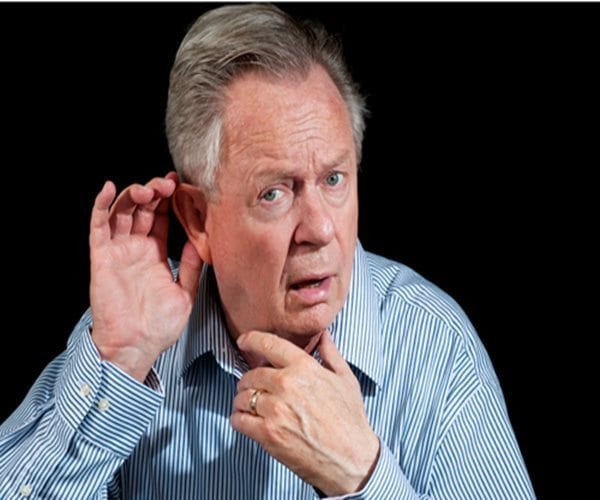
by Dr Alex Jimenez DC, APRN, FNP-BC, CFMP, IFMCP | Natural Health, Wellness
Many people are exposed to dangerously loud sounds at work and at play, and most of them don’t wear ear plugs or take other steps to prevent hearing loss, a recent U.S. study suggests.
Almost 49 million adults work in very noisy conditions, and more than one-third of them never use hearing protection, the study found. Among leisure pursuits, firearms pose a particular risk and just 59 percent of the 35 million U.S. gun users represented in the study wear hearing protection all the time.
“The problem here is both the number of people using firearms and the potential noise-inducing hearing loss from the repeated gunfire,” said senior study author Dr. Neil Bhattacharyya of Harvard Medical School and Brigham and Women’s Hospital in Boston.
“A rifle has an extremely loud single burst of sound and if you are firing hundreds of rounds, that can be very damaging, particularly without hearing protection,” Bhattacharyya said by email.
To assess how often U.S. adults are exposed to loud noise and how regularly they take steps to protect against hearing loss, researchers examined 2014 survey data representing 240 million people.
Overall, 22 percent were exposed to “very loud” sounds at work requiring them to shout to be heard at arm’s length. The exposures were for at least four hours a day, several days a week.
Roughly one in five people were exposed to loud sounds outside of work, and 62 percent of them didn’t use hearing protection, researchers report in The Laryngoscope.
With firearms, researchers found that one in five people who shot more than 10,000 rounds of ammunition in the past year never used hearing protection. Most of the firearm-related noise exposure came during recreational shooting.
Lawn mowers were the most common source of non-occupational noise exposure.
Almost two-thirds of people around loud noises during recreational activities never used any hearing protection.
One limitation of the study is that it only included one year of survey data, the authors note. It also didn’t have medical records to document specific hearing or health problems associated with noise.
“Untreated hearing loss is associated with increased stress, depression and social withdrawal, and may exacerbate problems for those with cognitive changes such as dementia,” said Dr. Jennifer Derebery of the House Ear Clinic and Institute and the University of California Los Angeles David Geffen School of Medicine.
If people aren’t sure whether the noise around them is loud enough to damage their ears, they can get a sound meter app for their phone and use ear plugs or other protection whenever the app shows the sound is too loud, Derebery, who wasn’t involved in the study, said by email.
And there are good options for people to wear when they still need to hear the sounds around them, a concern for many hunters and concert goers.
“There are outstanding electronic ear muff and ear plug options that solve many of the complaints that recreational shooters and hunters have related to conventional hearing protection,” said Colleen Le Prell, an audiology researcher at the University of Texas at Dallas who wasn’t involved in the study.
“They allow quiet sounds, such as speech and sounds the hunter might be making as they walk, to be not only delivered but amplified, which can be very useful with someone who already has some hearing loss,” Le Prell said by email. “Hearing loss can be prevented, with the consistent and correct use of hearing protection devices.”
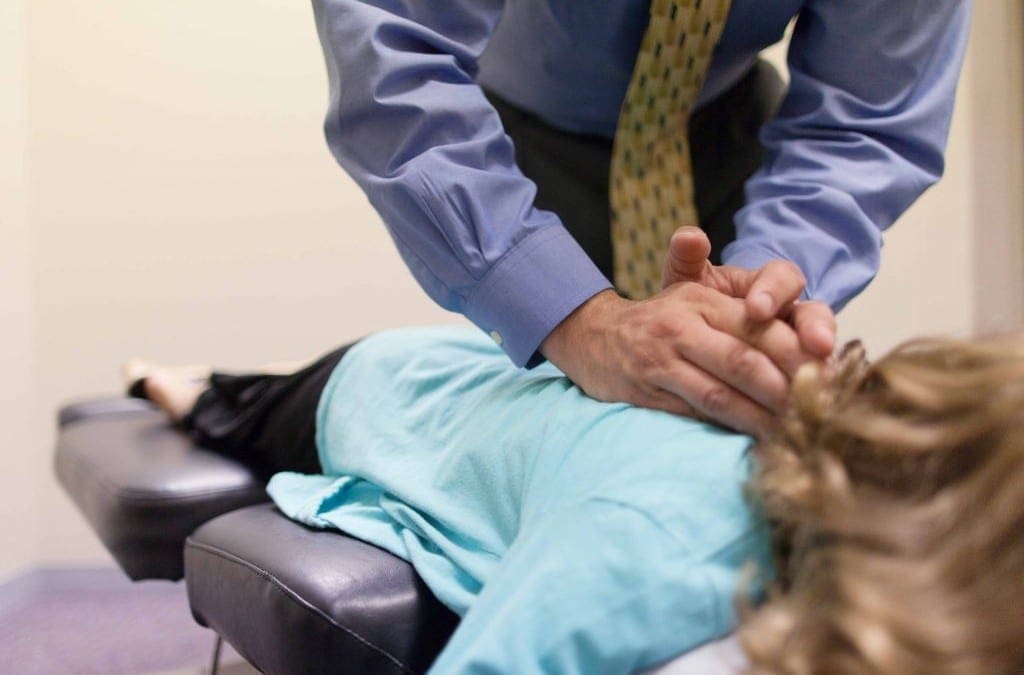
by Dr Alex Jimenez DC, APRN, FNP-BC, CFMP, IFMCP | Chiropractic
Many are confused about the benefits and value of chiropractic treatment. According to Dr. Billy DeMoss, a chiropractor with a practice in Newport Beach, who believes chiropractic is vastly underutilized.
He�s also the founder Cal Jam, one of the largest chiropractic teaching events in the world. I will have the privilege of speaking there later this year. Many will only consider chiropractic when they have back or neck pain, but its scope actually goes far beyond that.
�I try to get people to understand that your nervous system and your brain control every function of your body,� he says.
�When we have a condition in chiropractic we call subluxation, which is misalignment or dysfunction in the spine as far as mobility is concerned, it can cause nerve interference, which will interfere with the expression of intelligence that flows over the spinal cord and nerves.
It can contribute not only causing pain that most people perceive as a chiropractic problem but also can cause organs not to function 100 percent.�
Chiropractic as Preventive Medicine
Research by Dr. Dean Harrison and others suggests chiropractic treatments can help prevent progressive spinal degeneration, i.e. osteoarthritis or disc disease. Just like regular dental care will prolong the useful life of your teeth, getting regular chiropractic treatments can do the same for your spine.
Your spinal column, the vertebrae, and the discs, also protect your most delicate and important system � your nervous system � and impingements can contribute to a number of health problems and ailments.
According to DeMoss, anything you do to protect and nurture our spine will promote �greater expression of nerve intelligence� and �a higher vibrancy in health.�
�Healthcare is really about doing everything you can to get the body back in alignment, not only chemically but also spiritually and mentally.
Where I think chiropractic shines is that we address the cause of the problem. Somebody might have high blood pressure. Their high blood pressure is not due to the fact that they [lack] high blood pressure medication.
Your child might have asthma, but it�s not because he�s got a shortage of albuterol; an ear infection is not a shortage of amoxicillin. Those things have their place in a crisis situation. But [chiropractors] don�t look at the symptoms; we look at what caused the symptoms.
Many times if there�s nerve interference lowering the expression and function of organs, it can contribute to the body not functioning at 100 percent, which leaves it more susceptible to, as we in chiropractic say, �Dis-Ease� and then the body becomes sick or symptomatic.
What we like to do is look at the individual holistically and see what�s going on with their nervous system. �
A Brief History of Chiropractic
Osteopathic medicine was founded by Andrew Taylor Still about 140 years ago. As many of you know I�m a doctor of osteopathy (DO). DOs, like chiropractors, receive extensive additional training in spinal adjustments.
However, in my experience, only a small percentage of DOs are really skilled in this area as they have chosen a more conventional allopathic model, which includes more of an emphasis on drugs and surgery rather than diet and lifestyle changes.
Daniel David �D.D.� Palmer is considered the father of chiropractic. He opened the first chiropractic school in 1897. In 1910, the Flexner Report, which was funded by the Carnegie and the Rockefeller Foundations, set a new tone for medicine and led to the systematic undermining of natural medicine.
In the �60s, there was a persistent tendency to suppress physicians from referring patients to chiropractors � so much so that Dr. Chester Wilk ended up filing an antitrust suit against the American Medical Association (AMA) in 1976.
The lawsuit dragged on for more than a decade, but Wilk was ultimately successful. In 1987, the court ruled that the AMA had engaged in an unlawful conspiracy in restraint of trade to contain and eliminate the chiropractic profession.
How Children Can Benefit From Chiropractic
A large portion of DeMoss� patients are children. They don�t come in for pain issues, but rather your typical childhood problems such as earaches, allergies, and asthma, for example.
�Children are healing machines. As long as you get things properly lined up, their metabolism and capacity to heal is in there,� he says. �Sometimes you need to do more than cleaning up the diet and adjusting it.
Sometimes they need to be detoxified, whether it was from some type of possible toxic vaccine or from eating toxic foods. You�ve got glyphosate from GMOs �. preservatives � food colorings and additives � bromines.
You�ve got all these different things that can contribute to lowering the vibration of that patient�s healing potential, i.e. children �
It�s sad because I�ll see kids that come to me and it�s the same story over and over. It�s like, �He�s on his 12th round of antibiotics,� and I�m thinking to myself, �Why would you continue to do something if it didn�t work the first, second, third, or even fourth time? Why do you keep doing it?�
I�ve never taken an antibiotic. I�m fortunate. I wouldn�t take it unless I was on my death bed. The microbiome has become a hot topic lately. I�ve always known about that � When you just indiscriminately use an antibiotic � you�re destroying part of your � immune function.
The more antibiotics these kids take, the weaker their immune systems and the worse the symptoms get. That�s what I do as a chiropractor. I�m really good about adjusting. But I�m really an articulate teacher. I make it so that people can understand it.�
Not All Chiropractors Have the Same Philosophy
According to DeMoss, �chiropractic is like brushing your teeth;� it�s something you need to do on a regular basis to maintain the life of your spine, because regular activities, such as chronic sitting, can contribute to its functioning less than optimally. Granted, some chiropractors focus primarily on pain and injuries, and do not have the full skill set required to address issues like allergies or disease. So it�s important to make sure the chiropractor you choose has the appropriate vitalistic philosophy.
Most of DeMoss� patients come to him via word of mouth, and this is perhaps one of the best ways to find a good wellness chiropractor. You may also want to find out if he or she is trained in any other treatment modalities, such as muscle testing, applied kinesiology, or neuroemotional technique (NET). There are literally dozens of different techniques that can have a profound impact on addressing the bioenergetic component of disease, not just the structural.
- Ask your friends for a recommendation. A friend who knows both you and the chiropractor may be able to judge whether your health philosophies and personalities are compatible.
- Meet the doctor. Many chiropractors will agree to a no-cost consultation to determine whether you are a good match. To make this visit as productive as possible, here are a few things to consider:
1.Does the practice focus on vertebral subluxation and wellness? Physical, biochemical, and psychological stress may result in spinal subluxations that disrupt nerve function and compromise your health. If you�re looking for a wellness chiropractor, it�s essential that this be the focus.
Some chiropractors confine their practice to the mechanical treatment of back and neck pain, and this is something you need to be aware of beforehand.
2.Does the doctor �walk the talk�? If he or she is overweight, looks unhealthy, or does not live a healthy lifestyle, this speaks volumes regarding their commitment to wellness.
3.Do the two of you �click�? Do you like each other? Do you communicate well? Avoid a doctor who seems rushed, talks down to you, or seems disinterested in listening to your concerns.
4.Does the doctor use objective assessments of nerve function? Since your care is not based just on addressing pain, your chiropractor should be using some form of objective assessment of your nerve function, as spinal subluxations can sometimes be asymptomatic.
Non-invasive instruments that measure the electrical activity in your muscles, and/or a thermal scanner that evaluates the function of your autonomic nervous system can be used, for example.
5.What treatment techniques are used? Chiropractic techniques include low-force adjustments by hand, and more forceful adjustments using instruments. Ask which technique would be used on you, and if you have a preference, make sure the doctor is willing to use it.
As mentioned earlier, many chiropractors are also trained in other complementary techniques, so ask what else your doctor may have in his or her tool bag.
Chiropractic Is Good for More Than Just Pain
According to DeMoss, if you�re not healthy, chiropractic can often address the epigenetic and bioenergetic underpinnings. Naturally, diet and lifestyle play major roles, and DeMoss addresses all of those areas with his patients as well. To give you an example of what he�s talking about, a patient DeMoss has treated for 20 years told him about his daughter-in-law�s infertility problem.
She�d been trying to get pregnant for two and a half years, and they�d spent about $75,000 on infertility treatments, without any success.
�I said, �Gary, why didn�t you refer them here?� It doesn�t make sense to put the bun in the oven if the oven is not working. He didn�t think there was any correlation between her back and her capacity to become pregnant. I said, �I�m so confident, you don�t have to pay me until she becomes pregnant.� So he sent her in.
She was in her 10th week of care here when she became pregnant. He came in the other day and said, �OK. I owe you now.� He wrote me a nice check.
I want people to understand that when something�s not working in your body, there are things that we can do to make it work, other than drugs and surgery. It�s so sad that people have this limited belief set on what chiropractic is about. It�s more than just you coming in and seeing us as a Band-Aid to get rid of your pain.
In reality, I want people to come and utilize chiropractic to maximize their expression of life and maximize not only the quality but the quantity of the life that God have intended for them.�

by Dr Alex Jimenez DC, APRN, FNP-BC, CFMP, IFMCP | Fitness, PUSH-as-Rx
Posted on April 14, 2017, 6 a.m. in Diabetes Exercise
Research shows that HIIT quickly improves glucose metabolism and insulin sensitivity in people with type 2 diabetes.
Research published in the Scandinavian Journal of Medicine & Science in Sports shows that high-intensity interval training (HIIT) improves glucose metabolism and insulin sensitivity in people with type 2 diabetes.
The team, from the University of Turku in Finland, was led by Kari Kalliokoski, a senior research fellow.� Jarna Hannukainen served as project manager. In the study, researchers examined the effects of different types of exercise on the body�s ability to process glucose. Twenty-six participants in their 40s and 50s were selected for the two-week trial. One group already had healthy glucose metabolism. The second group included those with type 2 diabetes or pre-diabetes.
In each group, half of the participants were assigned HIIT exercise routines. The other half were assigned moderate intensity exercises. Six training sessions were completed during the two-week period.
At the beginning and end of the study, blood tests were completed that tested participants� glucose and fatty acid uptake. These are measures of how well the body absorbs and processes sugar and fats in the blood stream.
Research Results
In the final data analysis, all participants showed improvement in insulin sensitivity and the ability to metabolize glucose. However, those who completed HIIT workouts displayed a greater improvement than the moderate intensity participants. Researchers point out that any exercise can effectively reduce blood sugar and insulin sensitivity, but HIIT routines produce results more quickly.
HIIT involves performing intense anaerobic activities for a short period, usually 30 seconds. These intense spurts of activity are followed by several minutes of less intense recovery exercises.
Effects on Treatment of Diabetic Conditions
Previous studies have proven a link between regular exercise and improved glucose levels and metabolism. Choosing between HIIT or more moderate activities is a matter of personal preference. It is most important that the workouts be done regularly.
The study�s results support the idea that exercise is a simple, economical, and effective way to treat and prevent diabetic conditions. It also increases patient safety for those with co-occurring conditions, like cardiovascular disease. Exercise reduces the need for medication, which translates into less chance of dangerous drug interactions. Exercise also alleviates some of the less serious physical effects of diabetes, like mental fog and pain in the joints or muscles.
Researchers caution patients to check with their primary physician before starting an exercise routine. The research shows, exercise can lower blood sugar quickly. A person who is taking prescribed medication may need to have their dosage adjusted.
Tanja J. Sj�ros, Marja A. Heiskanen, Kumail K. Motiani, Eliisa L�yttyniemi, Jari-Joonas Eskelinen, Kirsi A. Virtanen, Nina J. Savisto, Olof Solin, Jarna C. Hannukainen, Kari K. Kalliokoski. Increased insulin-stimulated glucose uptake in both leg and arm muscles after sprint interval and moderate intensity training in subjects with Type 2 Diabetes or Prediabetes. Scandinavian Journal of Medicine & Science in Sports, 2017; DOI: 10.1111/sms.12875

















